Last updated: September 13, 2023
In recent years, there has been an increase in the number of fires caused by garbage disposal facilities and garbage trucks in Tokyo.
The cause is thought to be that rechargeable batteries such as lithium-ion batteries that were mixed in with non-burnable garbage were heated and ignited when they were crushed by the crusher at the processing facility or the press plate of the collection vehicle. If a fire breaks out, it may not only lead to damage to machinery and accidents to workers, but also delay in collection or stop delivery to the facility.
Before putting out your garbage, please double check that it has been separated correctly.
This is a battery that can be charged and used repeatedly.
There are lithium-ion batteries, nickel-cadmium batteries, nickel-metal hydride batteries, and small valve-controlled lead-acid batteries, and each has a "recycle mark" displayed on its body.
Please note that overseas-made or old rechargeable batteries may not have a ``recycle mark,'' but if they can be recharged and used repeatedly, they can be disposed of on the ``hazardous materials'' day.

lithium ion battery
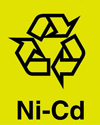
NiCad battery
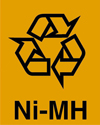
nickel metal hydride battery
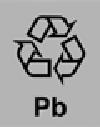
Small valve regulated lead acid battery
Let's insulate it and put it out.
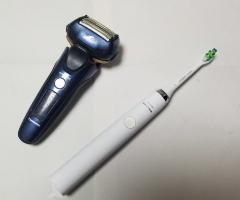
Small electronic devices with non-removable rechargeable batteries
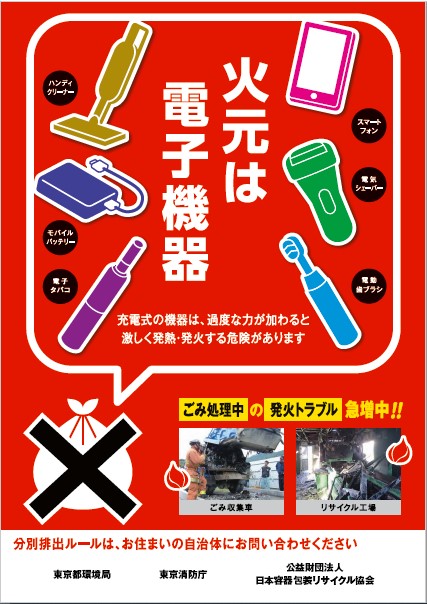
Lithium-ion battery discharge rules (how to dispose of) caution poster red
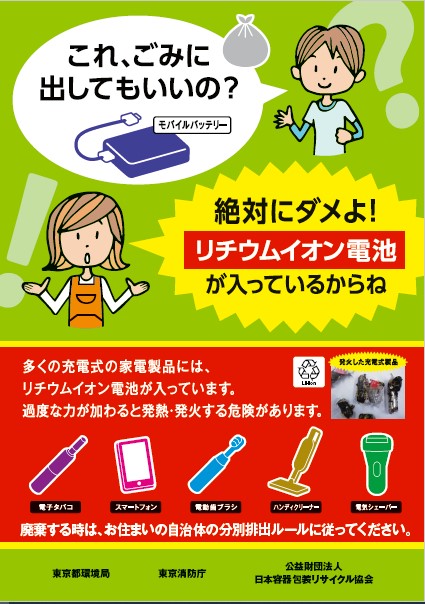
Lithium-ion battery discharge rules (how to dispose of) caution poster green
Inagi City Urban Environment Development Department Living Environment Division Phone: 042-378-2111